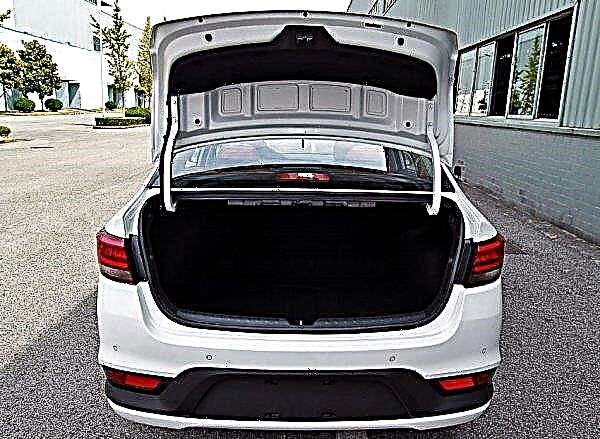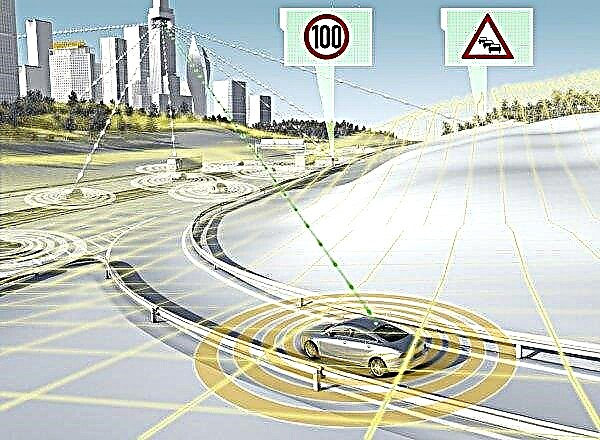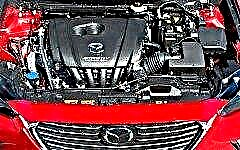

The content of the article:
- Features of SKYACTIV diesel engine
- Design features of the gasoline version
- Compliance
- Experts' fears
- Usage statistics
- Operating tips
Mazda manufacturers have always strived to delight the consumer with the introduction of special technical solutions. This trend has not bypassed the development of piston engines.
While most automotive concerns focused on the creation and implementation of turbocharged engines of high performance and small displacement, Mazda developers remained committed to reliable and familiar atmospheric engines.
Features of SKYACTIV diesel engine

The diesel version of SKYACTIV allows you to reach a top speed of 204 km / h, accelerating to 100 km / h in 9.4 seconds. Diesel power - 175 hp.
The developers were able to significantly increase the efficiency of the unit by reducing the compression ratio to 14 units. Glow plugs made of ceramic material facilitate cold starting of the engine and solve the problems associated with the formation of a combustible composition and its ignition. A distinctive feature in the design of the diesel engine was a change in valve timing and a lightweight aluminum cylinder block.
Unfortunately, statistics on the use of diesel SKYACTIV in the CIS have not yet been collected, therefore, it is too early to say anything about its reliability and actual resource.
Design features of gasoline SKYACTIV
For the first time, the SKYACTIV engine was installed on the Mazda CX 5 crossover. The power of the 2.0 petrol engine is 150 hp, and it accelerates to 100 km / h in 9.9 seconds. The maximum engine speed is 189 km / h. For the 2.5 model, the power is 192 hp, the unit accelerates to 100 km / h in 9 seconds, and the maximum speed is 195 km / h.
Both diesel and gasoline versions have a compression ratio of 14. In the case of a gasoline engine, this figure exceeds the typical figure of 10-12 units today, which in the classic solution creates some problems, however, which have been successfully eliminated by the developers.
A large compression ratio of the air-fuel combustible mixture in a gasoline-type engine is a guarantee of increasing its power. An increase in the internal cylinder temperature and an increase in internal pressure increase the efficiency of the engine - the air-gasoline mixture burns more efficiently.
On the other hand, the higher the compression ratio, the higher the risk of knocking. In the case of internal combustion engines of sports models, this problem has traditionally been solved by using gasoline with a high octane number. But in order for the compression of 14 to become available to ordinary consumers of 95th gasoline, engineers had to make a number of significant improvements and changes to the engine design:
- Modification of the fuel injection system. The SKYACTIV engine is equipped with a direct fuel injection module. Moreover, each injector has six points of injection instead of the traditional single point. This solution provided improved fuel atomization and additional cooling inside the combustion chamber. The internal system pressure increased to 200 bar, which significantly improved the quality of the gasoline-air mixture formed.
- Ensuring uniform ignition of the mixture near the candle. The original solution - changing the shape of the piston and the presence of a depression in it - made it possible to reduce the probability of detonation due to the uniform ignition of the combustible mixture in the immediate vicinity of the spark plug.
- Constructive changes in the exhaust system. The SKYACTIV exhaust system is equipped with a 4-2-1 "sports" manifold. The developers placed the catalyst behind the extended pipes. This made it possible to significantly relieve pressure in the process of exhausting the exhaust gas mixture.
- Gas distribution regulation. Replacing the hydraulic phase shifters with electronic ones allowed the designers to more flexibly regulate the gas distribution processes due to the greater accuracy of the valve opening schedule.
- Knock risk sensors. In addition to the above improvements at the design level, the engine received innovative sensors based on ion current analysis, which were installed on each cylinder. Sensors mounted on the ignition coils analyze the fluctuations in the generated ion current in the spark plug gaps after the gasoline-air mixture is ignited. If, according to the measurement results, the risk of detonation is obvious, a number of motor parameters are adjusted.
- The ability to use different cycles of work at different speeds. One of the factors affecting engine power loss is piston resistance. In order to neutralize the pumping losses of the engine, reducing the piston resistance at the moment when the process of compression of the fuel mixture starts, the developers implemented in their brainchild the ability to work in two different cycles: Atkinsonova and Otto.
The Atkinson engine duty cycle is applied at low speeds, when the engine does not need to produce high rpm. Technologically, this cycle provides for the closing of the intake valves a little later than the start of the compression stroke of the gasoline-air mixture. This makes it possible to draw back some of the entrained air, which provides economic operation and a decrease in the compression ratio.
When the engine is used to obtain high speed and is under significant load, the Otto cycle enters into operation, which has a strict sequence of valve action for exhaust and intake.
- Aluminum cylinder block. The weight of SKYACTIV is 10% less than its previous counterparts. This was achieved in part through the use of aluminum for the manufacture of the cylinder block. Structurally, the unit is composed of two parts.
- New lubrication pump. The unit is equipped with a new lubrication pump that can vary the pressure in two different ranges depending on which mode the motor is operating in. Such a constructive solution makes it possible to reduce the losses arising from mechanical friction, as well as the loss of the hydraulic plan.
Compliance

The new Mazda engine features lower emissions. The engine fully complies with the EURO-6 standard adopted in Europe in 2015, which regulates the level of harmful substances in automobile exhaust. This means that a vehicle equipped with a SKYACTIV petrol engine generates less than 130 grams of carbon dioxide per kilometer.
Experts' fears
For all its advantages, the SKYACTIV engine has a number of features that cause some concern on the part of experts. The main one is the load on the parts of the unit, which clearly did not decrease with an increase in the compression ratio, but, on the contrary, increased as expected.
Coupled with a number of changes to reduce engine weight, this is a cause for concern. In particular, the same aluminum block of cylinders itself is quite thin-walled, while it is under maximum load during engine operation.
Usage statistics

Cars equipped with SKYACTIV petrol engines began to be used in our country about five years ago. During this time, the following were noted in them the most common problems:
- malfunctions in the operation of the lubrication pump, which did not reach the declared maximum performance indicators, as a result of which there were errors in the operation of the hydraulic clutch installed on the exhaust camshaft, which is responsible for the phase change;
- ECU firmware conflict, as a result of which the engine stalls after a short interval after the first start (this problem is not fixed on European versions of cars);
- noisy engine operation resulting from premature failure of the intake camshaft cams.
In general, it can be argued that the brainchild of Mazda is quite reliable. But do not forget that the statistics of breakdowns and failures were collected for an insufficiently long period of time - most of the cars equipped with the new brainchild of Mazda developers have not yet covered the first 100 thousand kilometers.
Operating tips

According to the developers, SKYACTIV guarantees a resource of 300 thousand kilometers. But it should be borne in mind that such a figure is correct for operating conditions close to ideal. Also, we must not forget that a new engine requires the use of exclusively high quality engine oil and gasoline.
If, after the first hundred, there are no special problems with functioning, in the future the unit can still let the owner down, requiring too high repair costs due to its high structural complexity. That's why for those who want to keep the engine resource as long as possible, the following tips can be given:
- The SKYACTIV engine is extremely demanding on the quality of gasoline. In order for the engine to preserve its resource for a long time, gasoline should be used not lower than AI-98, and ideally - 100. The use of gasoline with a low octane number is guaranteed to lead to premature failure.
- Similar recommendations can be made for the engine oil used. The high temperature and the increased stress on the parts caused by the high compression ratio requires the use of only high-quality oil. It is preferable to constantly use something from the number of brands stated in the documentation.
- The presence of specialized sensors in the ignition coils that monitor the risk of detonation requires careful monitoring of the condition of the spark plugs. If they become contaminated, the data on the sensors will be inaccurate, and this, in turn, can lead to detonation. Therefore, it is necessary to regularly change the candles, and use only high-quality brands.
When purchasing a used car equipped with a petrol version of the SKYACTIV engine, the best solution would be to opt for a copy that has traveled no more than 100,000 km, and at the same time its owner used only high quality engine oil and high-octane gasoline without water and impurities. Otherwise, the chances are high that the motor resource is almost exhausted.
Summing up, we can say the following: the SKYACTIV engine, while remaining atmospheric, does not have a number of negative features inherent in turbocharged engines. At the same time, it is distinguished by a high level of structural complexity and is of little use for repair in our conditions.











